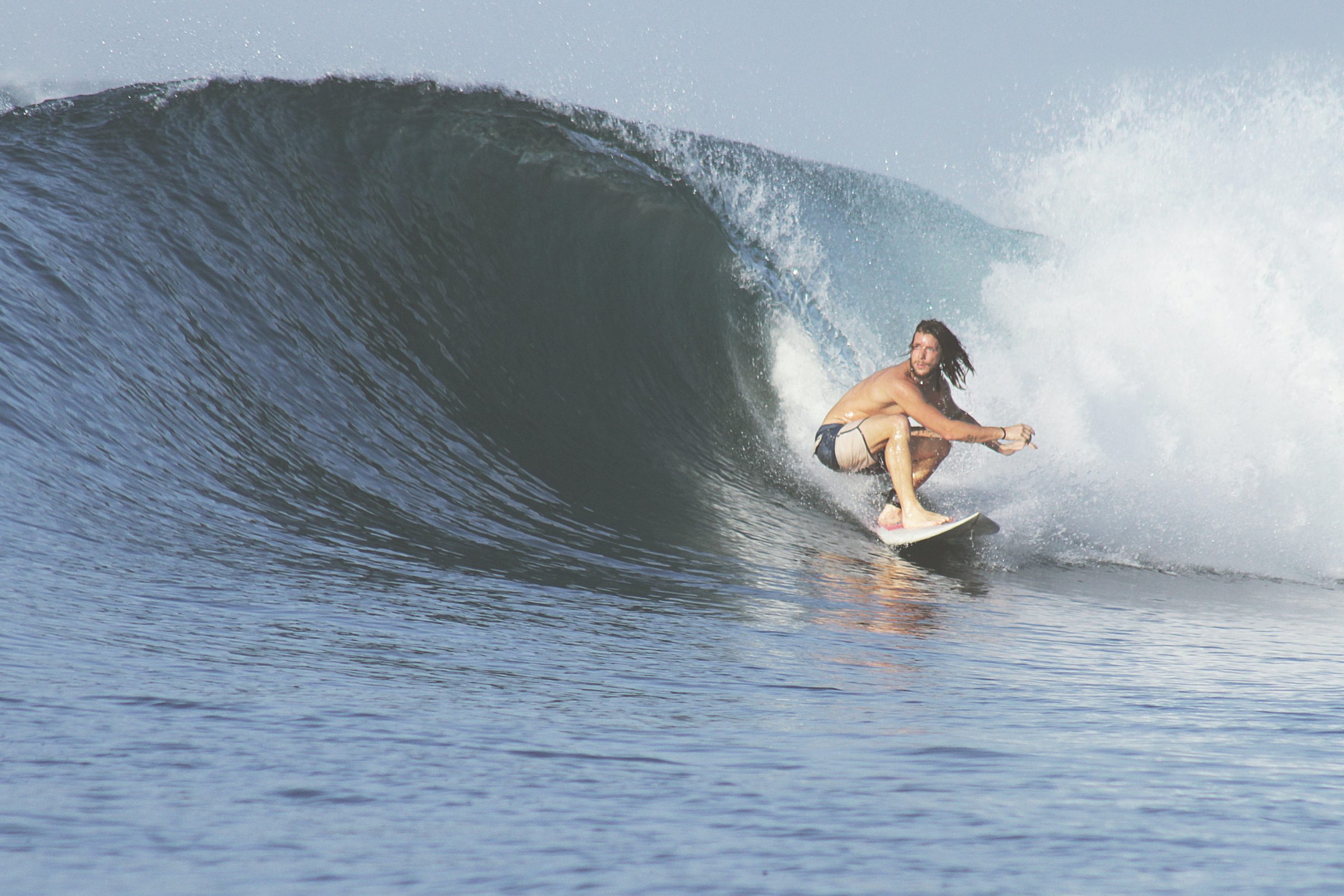This article would be better titled ” Learn Noseriding Fundamentals in 5 Days” because it is a continuous process to become a master of the art. However, if you can surf for five days in a row and follow the instructions below, you will surely make MASSIVE progress in your quest toward noseriding expertise.
This exercise assumes that you have been surfing for several years and are comfortable riding a wave, but something has yet to click about how to get to the nose of the wave (without falling).
Cross-stepping is something that other people do effortlessly, but it’s not easy to cross-step on a board that, despite the waves pushing you forward, still balances on the water’s surface.
Recenty, I wrote a piece called ” Noseride” and while the principles in that article are still very important, we will get more specific today and breakdown the progression of where you are now to getting those piggies on the nose in five days (or, to be precise, 5 surf sessions).
It is important to squeeze in these sessions as quickly as possible if you are unable to surf for 5 days straight. You can fit in 5 surf sessions within two weeks. This is only 5 days out of a total 14 days, or 36%. Checking your sessions in almost consecutive days can help you build your progress.
Important reminder:
The Noseriding signal is when all the variables work together harmoniously: the wave board and rider. The equation will fall apart if one of these variables is not present (or incorrect). Before we set out, let’s make sure that you have the three basic ingredients for success.
The Conditions
There are good and bad noseriding waves. Even in poor conditions, the best surfers are able to surf exceptionally well. But for the rest, the right waves will help them out.
The ideal conditions for learning to noseride would be a cleanly peeling wave at waist height. It should not be so soft that it feels hollow, nor too powerful that the wave becomes hollow. What we’re after is something that feels just right. Noseriding again is a sign that all variables are in sync.
The Equipment
The board is the second component of our equation. Surfboards are either designed for noseriding or they aren’t. Learning on the wrong equipment is a sure way to get frustrated. The noseriding board should be heavy, wide and flat at the nose. It also needs to have a concave on the nose to create lift. Finally, it must have a rocker (flip) in the tail to reduce the board’s speed in the pocket.
You may want to borrow or purchase a board better suited to your goals if the one you’re using for learning is too thin, too nose-rockering, or doesn’t trim easily through the water. This exercise should be done on the longest longboard you can find.
The Surfer
When surfing, you need to have many fast-twitch leg muscles firing. You’ll make small micro-adjustments in your balance while reading and reacting to the wave (and how your feet feel below). After I’ve been out of water, my fast-twitch muscle are the first to go. Cross-stepping is the most obvious example of this. When your legs haven’t been trained, those effortless, weightless steps you see Andy Nieblas take to the nose can feel like a stomp. In order to achieve this, we will spend 5 days learning how to read the waves, dial in your approach, and train your body.
It’s not a substitute for effective wave riding, but merely another exciting and fleeting moment that can be added to your surfing experience. In just 5 days, we will add a new moment to your repertoire. Commit yourself to the process. You cannot microwave success.
The Takeoff & Finding the Pocket
We will only focus on dropping into waves and positioning your surfboard in its pocket. The pocket is the area directly in front of where the wave breaks and is where most of its power is.
Finding the pocket and spending as much time in it as possible is a fundamental principle of surfing. Today, don’t worry about anything but finding the wave’s pocket and keeping your board there for as long as you can on each wave you catch.
Take a higher line if you are falling behind the waves.
You can slow down your board by shifting your weight slightly to the back foot.
Today, stay focused on your goal. Apply whatever force you need to your board to remain in the pocket. This is the first block in your journey to get up the nose.



